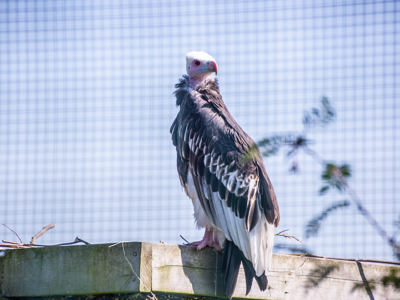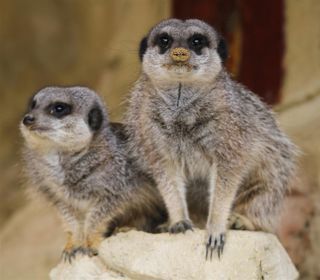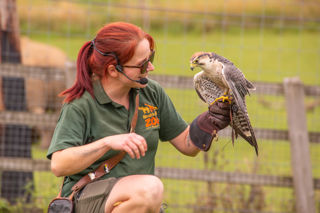
White-Headed Vulture
Scientific name: Trigonoceps occipitalis
The White-headed vulture gets its name from the downy, white feathers on its head. It has a strong bill, capable of tearing flesh and curved talons to grasp and pierce prey. Their large, broad wings can carry them for hours as they search for food.

-
We live...
Next to the Eagle enclosure, opposite the Viva South America enclosure.
-
Size Fact
White-headed vulture’s wings span over 2 metres!
-
Food Fact
White-headed vultures fly low and are often the first animals to feast on a carcass. Vultures are important to the eco system as they dispose of dead animals that could be a cause of disease.
-
Fun Fact
White-headed vulture chicks are completely white when they hatch.
You might also like...
-
![Meerkats]()
Meerkat Keeper Talk
Come along and learn about our mob of Meerkats from our experienced animal keepers.
Find out more
-
![Zoe And Falcon]()
Bird of Prey Flying Display
Watch our majestic birds of prey in our new Wings of Wonder flying display.
Find out more
-
![Andean Bear]()
Bear Keeper Talk
Learn about our Spectacled bears from our experts and find out what it is like to be a Spectacled bear keeper.
Find out more
-
![African Elephant - Shaka 2]()
Elephant Keeper Talk
Did you know Elephants are the largest land animals on Earth? Come and join our Elephant Keepers and learn about our bulls.
Find out more






